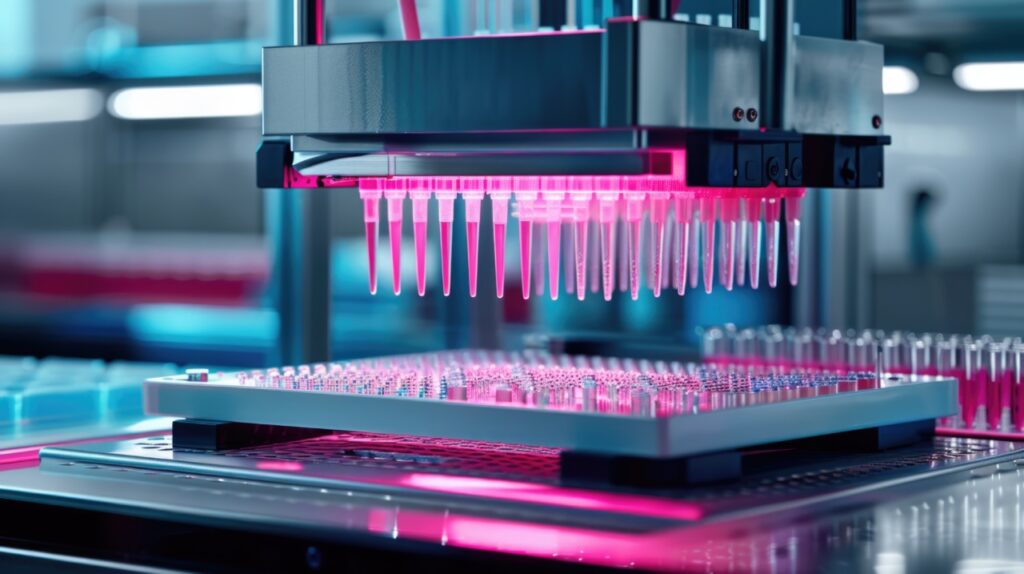Many lab workflows are at stake in the increasingly effective field of biotechnology. Automated liquid handling systems effectively help streamline error-prone, tedious tasks in this transformation. They deliver a variety of functions, such as dispensing, mixing, and transferring liquids in experiments. With the increasing complexity of biotechnological processes, automated liquid handling is paving the way for overcoming incidents such as repetitive manual pipetting, inconsistency, and the need for high throughput. This innovation is not only improving accuracy; it’s also increasing productivity in biotechnology labs.
Reducing Human Error
Automatic liquid handling is excellent because it avoids human error. In other words, taking these measurements with traditional manual liquid handling can yield inconsistent and cross-contaminated measurements, and there can be further mistakes due to human fatigue or distraction. Automated systems are designed to perform exact liquid transfers in precisely the same way, again and again. They’re very heavily software and robotic-based, so every pipetting action is done accurately, upping the reliability of the results. This, in turn, makes scientists more confident in their results while reducing the risk of making significant mistakes by human handling.
Improving Throughput and Efficiency
High-throughput processes are standard in biotechnology research—thousands of samples must be processed simultaneously. In these situations, laborious and inefficient manual liquid handling is discouraged. Automated liquid handling systems are very good when speed and large volume are required. These systems help with repetitive tasks and concentrate the area where the researcher can focus more on the complex work areas. Automated liquid handling can be done for high-throughput screening of drug candidates, genomics research, and other large-scale experiments to run faster and more efficiently. It can shave time off the research timeline, thereby shortening the time to the biotechnology frontier.
Saving Time and Reducing Costs
Another advantage is the time saved through automated liquid handling, and cost control is indeed another advantage of automated liquid handling. The laboratory can then work with reduced staff with higher throughput eliminated by a few invasive manipulations that have previously required intensive labor input. This efficiency means essential cost reduction, mainly when large quantities of research are being produced. Also, the automation level leads to fewer errors, such as costly slips, sample loss, or repeating experiments in each round because they were mismeasured. For the biotechnological laboratory, the return on investment in these automated liquid handling systems is generally high enough to make it an investment that ought to be made.
Embracing the Future of Biotechnology
Automated liquid handling is no longer a trend in biotechnology workflows—it’s a revolution that may define the biotechnology industry’s future. Therefore, factors like higher accuracy, throughput, reproducibility, and cost that facilitate faster discoveries and innovations are advantageous for the researcher. And this transformation continues as biotechnology continues to travel further and further.
Now is the time to consider the availability and use of automated liquid handling systems to improve efficiency and accuracy within a biotechnology lab. Contact an automated liquid handling systems provider near you!

I am a junior content outreach writer for OffGamers. I foster relationships between gaming enthusiasts and gaming developers to create relevant content for gamers worldwide. I also happen to be a passionate writer and a certified night owl.




![‘Jay Kelly’ Review – Noah Baumbach Makes A Case For The Magic Of Movie Stardom [NYFF 2025] ‘Jay Kelly’ Review – Noah Baumbach Makes A Case For The Magic Of Movie Stardom [NYFF 2025]](https://cdn.geekvibesnation.com/wp-media-folder-geek-vibes-nation/wp-content/uploads/2025/11/Jay-Kelly-JKELLY_20240523_15320_C2_R-300x180.jpg)

